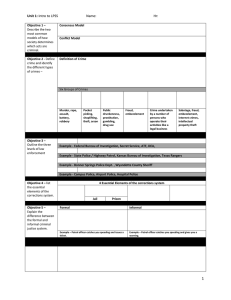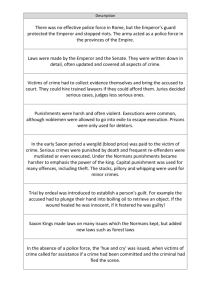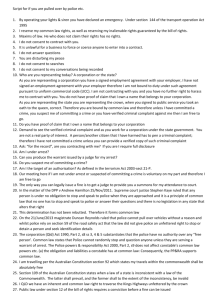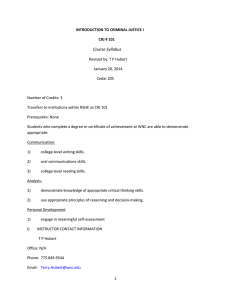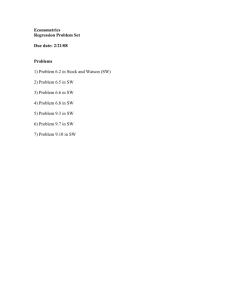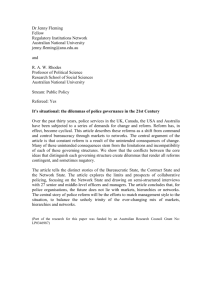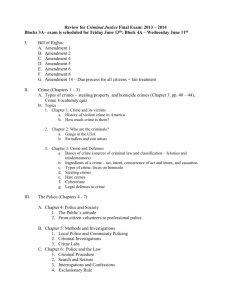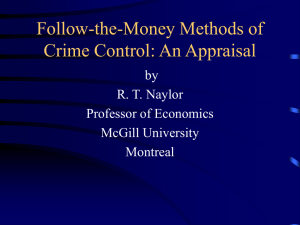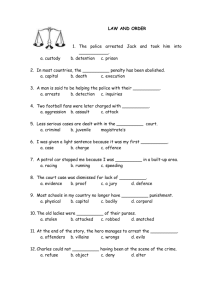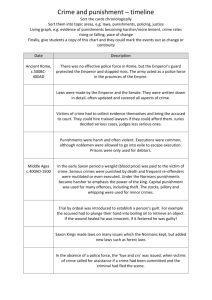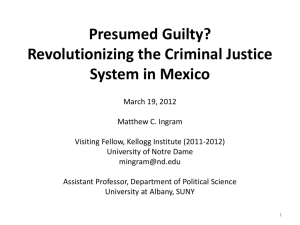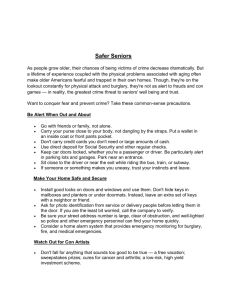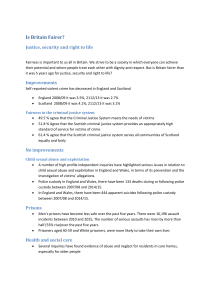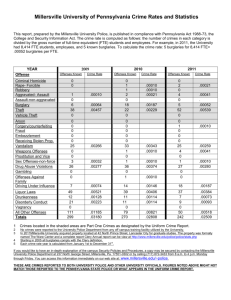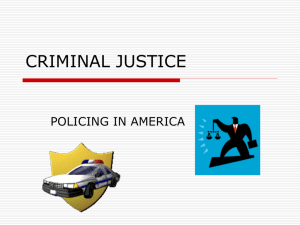Presentation from Rogelio Perez
advertisement
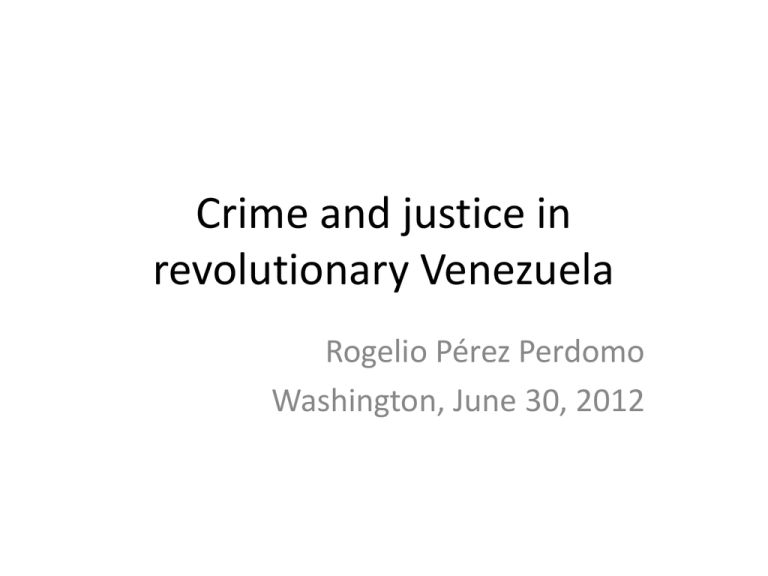
Crime and justice in revolutionary Venezuela Rogelio Pérez Perdomo Washington, June 30, 2012 The issues • Venezuela had relatively low violent crime in the 70s. Still in mid 80s homicide rate was 8 per 100k, lower than US. – In the 90s: from 8 to 20 – In 2000s from 30 to 57 – Kidnapping: rare in the 80s, frequent in the 90s • How to explain this significant increase? • What has been the role of law and criminal justice system? The 1980s: violence and justice • Failure of an economic system (indebtedness, exchange control, devaluation, stagnation, corruption scandals, scarcity). • Rise on crimes against property: fear of crime. • Loosening on gun control regulation (an economic base for crime reduction). Mano dura • More use of military police (GN) • Militarization of civil police and more discretion to policemen: – Police abuses – The police became the problem – Time of alienation from the state and the political system • Los presos sin condena (non-codemned prisoners) The age of reform (1990s) 1 • El gran viraje (great turn): privatization, deregulation, free markets – economic success and political failure. • Political decentralization: the creation of municipal police forces – the creation of relatively secure spaces The age of reform 2 • Judicial reform: managerial & technological change, investment in justice (WB) • Reform of criminal procedure: the GermanAmerican model adopted in 1998 – adversarial, oral, jury, etc. • Political change: a new constitution 1999 / Principles of criminal justice put in the constitution The Código Orgánico Procesal Penal: Misfortunes of virtue • Liberal code in 1998/99: defense guarantees, principle of freedom, speed procedure. Blamed for the increase of crime in 99 and 2000 • Reforms in past decade (2000, 2001, 2006, 2008, 2009). Liberal principles discarded: great discretion to prosecutors and judges to handle the procedure. Police autonomy • Inquisitorial procedure back: presos sin condena Criminalization • Penal Code. Modest reform for penalization of political protest • Multiplication of crimes: more than 1000 crimes. Penalization of economic activity. • Persecution against bankers, brokers, military men, politicians and students are common. PRISON POPULATION 1998-2010 The control of prisons • Prisons: easy traffic of guns and drugs / Pranes are in charge / Extreme violence. El Rodeo, La Planta • Why is the government unable to control prisons? – Corruption: prisons are places for exchanges – Officials are not accountable / political loyalty is the virtue The prison as a metaphor of the justice system • The case of Eladio Aponte-Aponte: Top military prosecutor converted in Supreme Court justice and head of the Criminal Chamber- the strong man in the criminal justice system. • Fell out of grace. Afraid of being killed sought DEA’s protection. Talking about the drug lords’ control of high government and the military • Chavez’s control of the judiciary explained from inside The mafia-state • State as a mafia type organization. • The politicians not concerned with controlling crime, but how to use criminals for dirty political jobs. • Prosecutors, judges and policemen paralyzed. Efficiency or quality of decisions not appreciated. Obedience is awarded. • “Mistakes” punished with firing or worse. Can crime be controlled? Can the state be recovered? Political change as requisite for start the rebuilding of institutions The institutions of the justice system are especially important: courts, National Prosecutor’s Office, police, including military police Hard and complex task



